
In our plastic surgery trend forecast for 2010 we predicted that “Fat is Phat” – and it was! We focused on a new era of using your own adipose fat tissue as a means to rejuvenate your face, breast, buttocks, and hands. There is no doubt, fat injections saw great growth and more demand in 2010.
2010 also ushered in the new promising decade for the use of adipose stem cells. Stem cells from your own autologous fat, also known as adipose stem cells, have the power to rejuvenate tissue, heal wounds, and cure diseases. Adipose stem cells are adult stem cells and not the stem cells that are derived from embryos. Stem cells were first isolated from adipose tissue by plastic surgeons and researchers in the late ’90s. In 2001, these researchers published their findings that stem cells from adipose tissue were not only more abundant than those from bone marrow, but they contained a higher percentage of healing cells than bone marrow stem cells.
Taking the pulse at the various Stem Cell conferences around the country in 2010, we found that more clinical researchers are gravitating to adipose tissue as a source of stem cells. Bone marrow has historically been the default source of adult stem cells for researchers. Likewise, the volume of peer reviewed publications attesting to fat as an abundant source of stem cells has seen a tremendous increase in the past year.
So what’s in store for 2011? Fat is phat again! We expect adipose stem cells to play an even bigger role in Plastic Surgery and the new field of Regenerative Medicine. REGEN is the new pillar of medicine. Here are some 2011 themes to watch for:
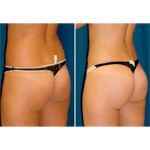
Better quality fat grafting
Results with Fat grafting will continue to improve as plastic surgeons integrate high density fat grafting into their practice. Fat grafts that are mixed with the high density fat pellet from the centrifugation contain a population of adipose stem cells and result in longer lasting fat grafts. Stem cells create new blood supply in the tissue and improve the texture and elasticity of the skin. Expect to see higher patient satisfaction with Facial fat injections and Brazilian butt lifts as surgeons adapt better fat grafting techniques using stricter processing methods and new fat grafting tools in the marketplace.
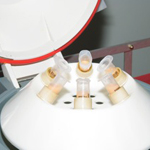
Methods to isolate adipose stem cells
Adipose stem cells can either be found in tissues in limited quantities or cultured expanded to increase the cell count. The methodology for culturing adipose stem cells was patented by Dr. Adam Katz several years ago. In 2011, we will see innovation in ways to harvest naturally occurring stem cells in their minimally manipulated state.
Dr. Alexandra Condé Green, a Brazilian Plastic Surgeon recently published a paper stating that small quantities of stem cells exist in fat that has only been centrifuged. Her study evaluated the stem cell populations in centrifuged fat. According to her study, you do not need elaborate processing with enzymes to isolate a population of stem cells from fat. This is an exciting finding, as it opens the possibility of delivering concentrations of adipose stem cells using very basic processing techniques. This is important because simple processing methods such as centrifugation do not need FDA approval, as these methods come under the practice of medicine, instead of drug guidelines. This means that you can get the benefit of adipose stem cells in fat grafts – today.
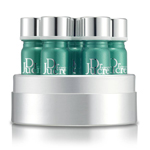
Stem cells in skin care products
This past year we saw new and exciting ads for stem cell creams from various companies. The premise is that active molecules secreted by stem cells can be packaged in a cream that can be used to make your skin younger instead of undergoing surgical procedures such as stem cell enhanced fat injections or traditional surgery.
Do stem cell creams really work? The premise is that active molecules secreted by stem cells can be packaged in a cream.
The premise of being able to package stem cells in a cream certainly makes sense at first. In fact, stem cell practitioners may be on the verge of moving beyond stem cells in their entirety and using only the by-products of stem cells for various applications. Cultured stem cells secrete many active molecules that can stimulate blood vessel formation, protein synthesis and remodeling, etc. In short, these are all the ingredients to make your skin younger. Some stem cell companies are collecting these molecules and packaging them to be sold as beauty creams.
However, like many ideas that seem great at first, the devil is in the details.The concept of drug delivery through the skin is not new; it’s called transdermal delivery. Some women are already familiar with hormone skin patches used for birth control or post-menopausal hormone replacement therapy. To be effective, these molecules have to go through the outer protective layer of the skin. That is not a given, and indeed many high priced collagen creams and enzyme lotions never pass through that skin layer. Even if the molecules do pass through the protective skin layer, they have to interact in very specific ways with cells in order to have an effect. Sometimes the molecules have to be in close proximity to the target cell in order to have an effect. Alternatively, they may need another specific molecule to be active. Other times, the molecules get broken down very quickly in the subcutaneous fat layer.
Therefore, the fact that a cream is chock full of growth factors and stem cell products is not a guarantee that it will work. On the other hand, developing a stem cell cream is just like developing any other drug. Tweaking the composition of these creams will eventually yield a cream that works and then it will be, like they say — off to the races! Tune in, and we’ll let you know throughout the year what the scoop is on these creams.

Adipose stem cells in radiation induced fibrosis therapy
Research shows that stem cells have enormous potential in reversing the damaging tissue effects of radiation therapy, which is the standard treatment regimen given to patients following a mastectomy for breast cancer. Radiation therapy is also used for tumors of the head and neck. Stem cell enhanced fat grafting holds out great promise to millions of patients in the US alone who suffer from the painful and disfiguring consequences of radiation therapy. Clinical studies have shown that these cell enhanced fat grafts can heal and repair the damaged tissue.
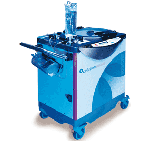
Medical devices for adipose stem cell therapy
Expect to hear more about companies who are in pre-market approval for devices that deliver closed system approaches to adipose stem cell therapy. Companies such as Cytori, Thermogenesis, and Tissue Genesis are the pioneers for the first generation of devices designed to deliver high quantities of adipose stem cells for cosmetic and therapeutic purposes. Once approved, these devices will treat heart disease, arthritis, radiation damaged tissue, and other diseases. These devices are an alternative to manual lab techniques to process large numbers of stem cells. These devices eliminate the need for GMP compliant laboratory facilities in a hospital or out-patient surgery center. Keep an eye on these stocks and other cell therapy companies!

Stem cells and the FDA
Are autologous minimally manipulated adipose stem cells considered a drug or a tissue? Where do you draw the line in the sand for minimal manipulation? This is the multi-Billion dollar question that the entire pharmaceutical industry is holding its breath for. Embryonic stem cells and cultured adult stem cells have already been designated as a drug by the FDA. However, the FDA has not yet taken a formal position on autologous uncultured adipose stem cells. These are unexpanded cells with minimal manipulation that have been derived from your own fat for your own usage.
We predict that the FDA will weigh in favorably on unexpanded, minimally manipulated adipose stem cells and not label them as a drug (HCT/P 351), but as a tissue (HCT/P 361). A ’tissue’ classification would allow doctors to perform this procedure without the rigorous FDA applications required for embryonic stem cells and other types of adult stem cells. This would provide a small, but important opening for autologous adipose stem cell therapies to be performed in the U.S. It would be a huge win for patients and the stem cell industry.
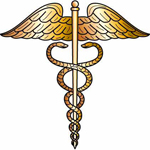
Stem cells in healthcare reform
Treatment with adipose stem cells will start to be viewed as a partial solution to reducing health care costs. Data has already emerged that in cases of moderate to severe joint arthritis, adult stem cell therapy has clear advantages in cost and safety over traditional joint replacement. Expect data in favor of stem cell therapy to emerge for other conditions such as heart disease and breast reconstruction which shows that adult stem cell therapy is more cost efficient and safer than traditional procedures. Stay tuned.

Legal cases regarding stem cell therapies
The outcome of a lawsuit filed in U.S. District court in 2010, U.S. Department of Justice vs. Regenerative Sciences (Drs.Centano/Schultz), will have enormous impact on the stem cell industry going forward. Although the lawsuit involves the use of cultured bone marrow stem cells in the treatment of orthopedic diseases such as degenerative disc disease, a favorable ruling for Regenerative Sciences would be a huge win for patients seeking stem cell treatment in the U.S. There is no doubt that the outcome of this lawsuit will impact the stem cell sector for many years to come.




Jean Arnone says:
Dr. Ricardo L Rodriguez says:
Dixie Ashby says:
Dr. Ricardo L Rodriguez says:
sandra vargas says:
Dr. Ricardo L Rodriguez says:
Charles says:
Charles says:
Dr. Ricardo L Rodriguez says:
Charles says:
Dr. Ricardo L Rodriguez says:
Dean says:
Dr. Ricardo L Rodriguez says:
Sandy says:
Dr. Ricardo L Rodriguez says:
Jeffrey Spiegel says:
Sandy says:
Dr. Ricardo L Rodriguez says:
Dr. Venkatesh Ponemone says: